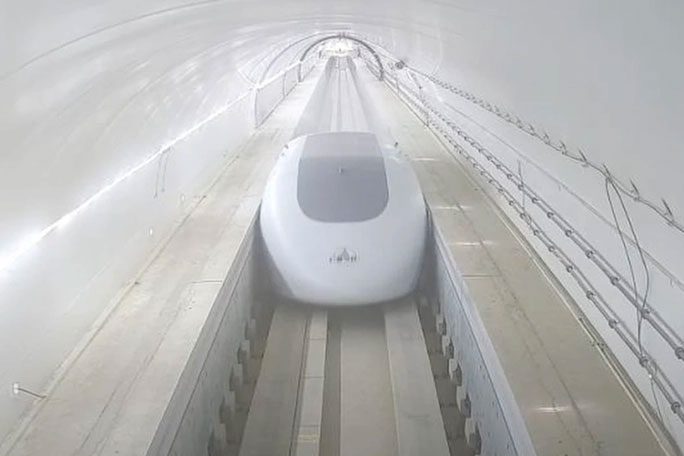China Successfully Tests Passenger Hyperloop Train Capable of Traveling at 1,000 km/h in a Vacuum Tube.
China Space News reported last week that a prototype hyperloop train, operating based on the electromagnetic induction principle (hyperloop), successfully completed three test runs at a superconducting magnetic levitation test tube in Dai Dong, Shanxi Province. In all three trials, the hyperloop train operated normally, achieving speeds of over 50 km/h on the test track.
The tests also validated several other critical technologies while confirming the operational accuracy of this hyperloop system. Currently, the vacuum tube used for testing is only 2 km long, but plans are in place to expand it to 60 km in the near future.
This marks the first time an Asian country has successfully tested a hyperloop train.
However, the report did not specify whether all the air was evacuated from the tube during the tests. Maintaining a low-pressure environment within the tube is one of the most significant challenges in developing hyperloop technology.

China successfully tests magnetic levitation train just 9 months after implementation. (Photo: CASIC).
In fact, the concept of hyperloop technology is not new; it was first proposed in 2012 by American tech billionaire Elon Musk. At that time, the founder of SpaceX developed The Boring Company to turn this idea into reality.
Subsequently, billionaire Richard Branson, founder of Virgin Galactic, also established a company to research and develop hyperloop technology named Hyperloop One (later rebranded as Virgin Hyperloop). This company conducted the world’s first passenger-carrying test in a hyperloop pod, achieving a speed of 172 km/h in 2020.
The research team from the China Aerospace Science and Industry Corporation (CASIC) hopes that once completed, the train will be able to transport passengers and cargo at speeds of 1,000 km/h. This speed would feel “like flying on the ground”, comparable to that of an airplane.
The fastest operational high-speed trains currently run at speeds of 350 km/h. Increasing their speed significantly would lead to increased wear on the tracks and higher energy consumption due to air resistance.
CASIC scientists stated that the magnetic levitation technology in Dai Dong would help eliminate track wear from friction, while the vacuum tube would reduce air resistance.
China’s magnetic levitation train technology emerged much later, as CASIC only began constructing the Dai Dong test facility in April of last year. However, less than a year later, the team completed the initial testing.
“This is truly a remarkable achievement” – China Space News commented, affirming that the project’s early results were due to strong support from the Chinese government.


















































